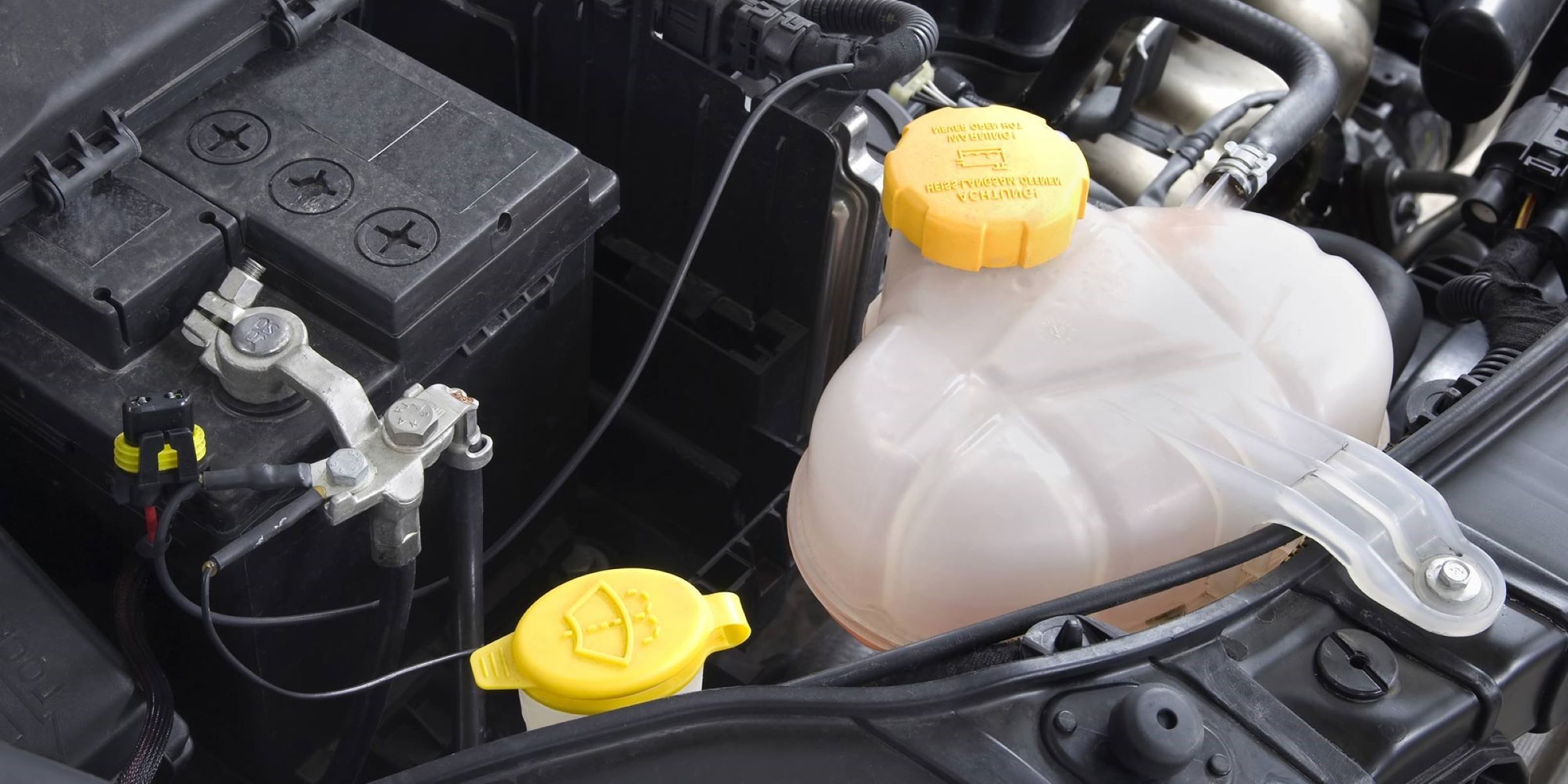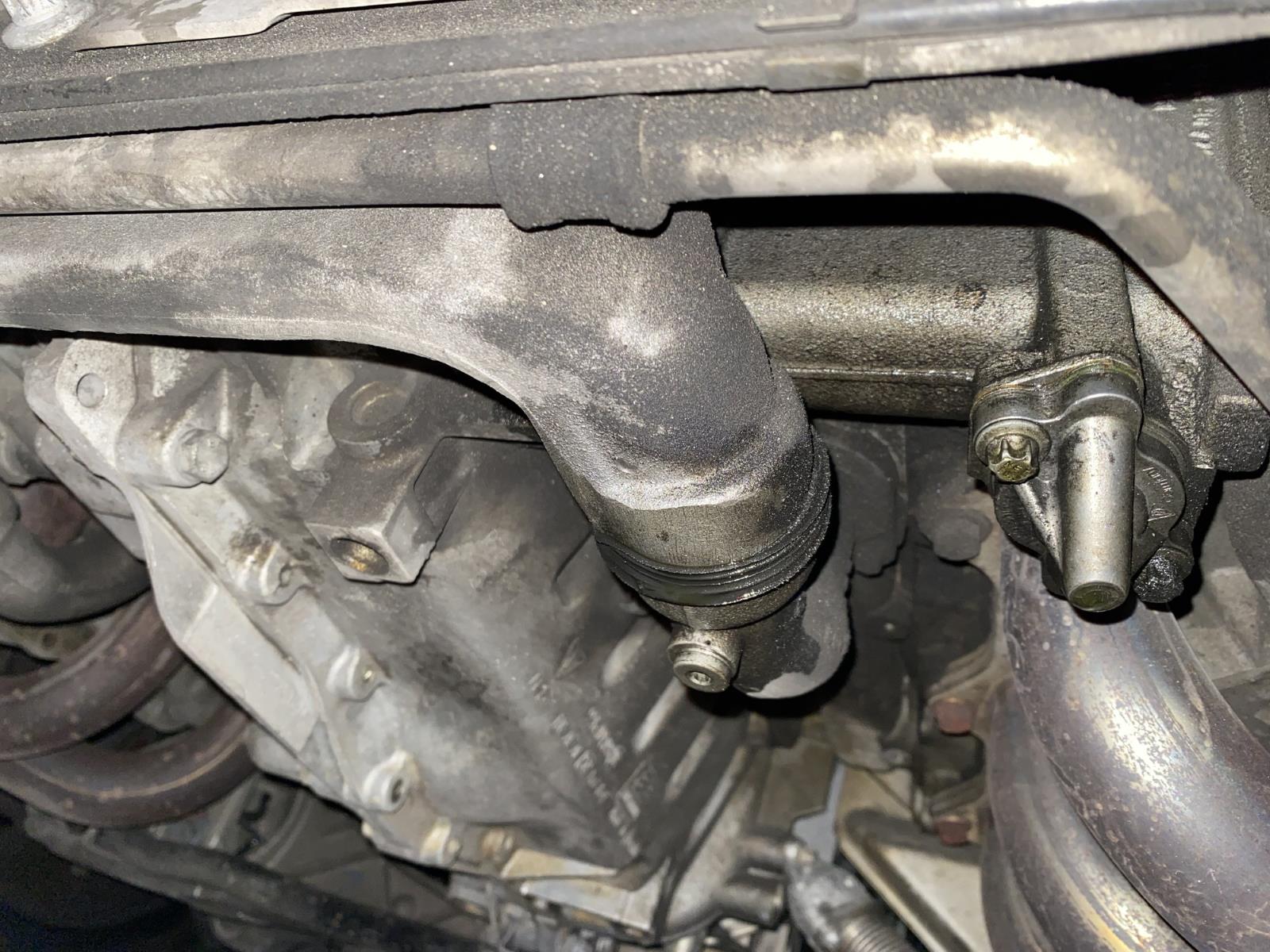Home>Automotive>Oops! I Added Brake Fluid To My Power Steering. Here’s What You Should Do!


Automotive
Oops! I Added Brake Fluid To My Power Steering. Here’s What You Should Do!
Published: February 17, 2024
If you've mistakenly added brake fluid to your power steering, follow these steps to prevent damage and ensure the proper functioning of your automotive system. Learn what to do next!
(Many of the links in this article redirect to a specific reviewed product. Your purchase of these products through affiliate links helps to generate commission for Regretless.com, at no extra cost. Learn more)
Table of Contents
Introduction
Adding brake fluid to your power steering system can be a common mistake, especially for those who are not familiar with the intricate details of their vehicle's maintenance. The power steering and brake fluid reservoirs are typically located in close proximity under the hood, making it easy to confuse the two when topping up the fluids. However, it's crucial to understand that these fluids serve different purposes and are not interchangeable.
In this article, we will delve into the potential repercussions of adding brake fluid to the power steering system, and provide a comprehensive guide on the necessary steps to rectify this error. Understanding the gravity of this mistake and taking prompt corrective measures can prevent significant damage to your vehicle's power steering system, ultimately saving you from costly repairs and ensuring the safety and performance of your car.
Let's explore the implications of this mishap and equip ourselves with the knowledge to address it effectively.
Understanding the mistake
Adding brake fluid to the power steering system is a critical error that can have detrimental effects on the functionality and safety of your vehicle. The power steering system relies on hydraulic pressure to assist in steering, while brake fluid is essential for hydraulic braking systems. These two fluids serve distinct purposes and are formulated with different chemical compositions to meet the specific requirements of their respective systems.
The power steering fluid is designed to withstand higher pressures and temperatures, ensuring smooth and responsive steering performance. It also contains additives that lubricate the power steering pump and assist in minimizing wear and tear on the system's components. On the other hand, brake fluid is engineered to withstand extreme heat and provide consistent hydraulic pressure to facilitate efficient braking, making it incompatible with the power steering system's components.
When brake fluid is mistakenly added to the power steering reservoir, it introduces a fluid with a vastly different viscosity and chemical composition than what the power steering system requires. This can lead to a range of issues, including reduced steering responsiveness, increased friction and heat generation within the power steering pump, and potential damage to seals and other components within the system.
Furthermore, the introduction of brake fluid into the power steering system can compromise the lubrication properties necessary for the smooth operation of the power steering pump, potentially resulting in premature wear and failure of critical components. The incompatibility of the fluids may also lead to the formation of sludge or deposits within the power steering system, further impeding its functionality and potentially causing irreversible damage.
Understanding the distinct roles and compositions of power steering fluid and brake fluid is essential in preventing this error. It underscores the importance of exercising caution and precision when performing maintenance tasks on your vehicle, as even a seemingly minor mistake can have far-reaching consequences. With a clear understanding of this mistake, it becomes evident that immediate action is imperative to mitigate potential damage and restore the proper functioning of the power steering system.
Potential damage
Adding brake fluid to the power steering system can result in a myriad of potential damages, ranging from impaired steering performance to extensive mechanical issues. The consequences of this error can manifest gradually, exacerbating the severity of the damage if left unaddressed. Understanding the potential ramifications of this mistake underscores the urgency of taking swift corrective measures to prevent further harm to the vehicle.
The introduction of brake fluid into the power steering system can lead to a significant reduction in steering responsiveness and control. The incompatible viscosity and chemical composition of brake fluid can hinder the smooth operation of the power steering pump, resulting in increased resistance and effort required to steer the vehicle. This can compromise the driver's ability to maneuver the vehicle safely, particularly in challenging driving conditions or emergency situations.
Moreover, the presence of brake fluid in the power steering system can elevate the temperature within the system, leading to increased friction and heat generation. The power steering pump, designed to operate with specific fluid properties, may experience heightened stress and wear as a result of the incompatible fluid, potentially leading to premature failure of the pump and other critical components. The compromised lubrication properties of the brake fluid can further exacerbate the wear and tear on the system, amplifying the risk of mechanical breakdown.
In addition to diminished steering performance, the introduction of brake fluid into the power steering system can compromise the integrity of seals and other components. The chemical incompatibility of the fluids can lead to deterioration of seals, potentially resulting in leaks and loss of hydraulic pressure within the power steering system. These leaks can lead to a loss of power steering assistance, posing a safety hazard and necessitating immediate attention to prevent accidents or loss of vehicle control.
Furthermore, the presence of brake fluid in the power steering system can contribute to the formation of sludge or deposits within the system's components. These deposits can impede the flow of fluid, obstruct critical passages, and compromise the overall functionality of the power steering system. Over time, the accumulation of sludge and deposits can lead to irreversible damage, necessitating extensive repairs or component replacements to restore the system to its optimal condition.
Understanding the potential damage resulting from adding brake fluid to the power steering system underscores the urgency of addressing this mistake promptly. By taking proactive steps to rectify the error, vehicle owners can mitigate the risk of extensive damage and ensure the continued safety and performance of their vehicles. Swift corrective action is essential in preventing further deterioration of the power steering system and avoiding costly repairs in the long run.
Steps to take after adding brake fluid to power steering
Upon realizing the mistake of adding brake fluid to the power steering system, prompt and decisive action is crucial to mitigate potential damage and restore the proper functioning of the vehicle's power steering system. Here are the essential steps to take after adding brake fluid to the power steering:
-
Immediate Drainage: The first and most critical step is to drain the contaminated fluid from the power steering system. This involves removing the reservoir cap and draining the fluid using a siphon pump or by disconnecting the low-pressure return line from the power steering pump. It is imperative to remove as much of the contaminated fluid as possible to minimize the risk of damage to the system's components.
-
Thorough Flushing: After draining the contaminated fluid, the power steering system must be thoroughly flushed to remove any residual traces of brake fluid. Flushing the system involves replenishing it with the appropriate power steering fluid and cycling the steering wheel to purge the remaining contaminants. This process may need to be repeated multiple times to ensure the complete removal of the brake fluid from the system.
-
Inspection of Components: Following the flushing process, it is essential to inspect the power steering system components for any signs of damage or deterioration resulting from the presence of brake fluid. This includes checking for leaks, assessing the condition of seals and hoses, and examining the power steering pump for any abnormal wear or stress. Identifying and addressing any damage at this stage is crucial to preventing further complications.
-
Replacement of Fluid and Filter: Once the system has been thoroughly flushed and inspected, the next step is to replenish it with the appropriate power steering fluid. It is advisable to replace the power steering fluid filter to ensure that any remaining contaminants are effectively captured, preventing their circulation within the system.
-
System Bleeding and Testing: After refilling the power steering system with the correct fluid, it is essential to bleed the system to remove any air pockets and ensure optimal hydraulic performance. This involves turning the steering wheel from lock to lock while monitoring the fluid level and topping it up as necessary. Following the bleeding process, a comprehensive test of the power steering system should be conducted to verify its functionality and responsiveness.
-
Professional Assessment: In instances where the vehicle owner is uncertain about performing the corrective steps or suspects significant damage to the power steering system, seeking professional assistance from a qualified mechanic or automotive service center is highly recommended. A professional assessment can provide a comprehensive evaluation of the system's condition and ensure that any underlying issues are effectively addressed.
By diligently following these steps, vehicle owners can rectify the mistake of adding brake fluid to the power steering system and safeguard the integrity of their vehicle's power steering system. Taking proactive measures to address this error is essential in preserving the safety, performance, and longevity of the vehicle, underscoring the importance of timely corrective action.
Conclusion
In conclusion, the inadvertent addition of brake fluid to the power steering system can have far-reaching implications for the safety and functionality of a vehicle. Understanding the gravity of this mistake and the potential damage it can cause underscores the importance of swift and decisive corrective action. By recognizing the distinct roles and compositions of power steering fluid and brake fluid, vehicle owners can equip themselves with the knowledge to address this error effectively.
The potential damage resulting from the introduction of brake fluid into the power steering system highlights the urgency of prompt intervention. From diminished steering responsiveness to compromised mechanical integrity, the repercussions of this mistake can escalate if left unattended. Swift drainage, thorough flushing, component inspection, fluid replacement, and system testing are essential steps in rectifying this error and safeguarding the power steering system from further harm.
Furthermore, seeking professional assessment and assistance when in doubt or when significant damage is suspected can provide invaluable support in restoring the power steering system to its optimal condition. By prioritizing the timely rectification of this mistake, vehicle owners can mitigate the risk of extensive damage, ensure the safety of their vehicles, and prevent costly repairs in the long run.
Ultimately, the mistake of adding brake fluid to the power steering system serves as a reminder of the critical role that precision and attentiveness play in vehicle maintenance. By exercising caution and adhering to the recommended maintenance procedures, vehicle owners can minimize the risk of such errors and preserve the integrity of their vehicles' critical systems.
In essence, the proactive rectification of this mistake serves as a testament to the commitment to vehicle safety and longevity. By acknowledging the error and taking decisive corrective measures, vehicle owners demonstrate their dedication to upholding the performance and reliability of their vehicles, ultimately enhancing their driving experience and peace of mind.
In conclusion, the mistake of adding brake fluid to the power steering system, while potentially consequential, can be effectively addressed through prompt and methodical corrective actions. By leveraging the insights provided in this article, vehicle owners can navigate this challenge with confidence, safeguarding the integrity of their vehicles and ensuring optimal performance on the road.















